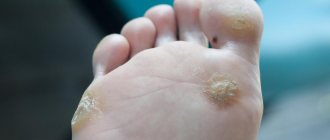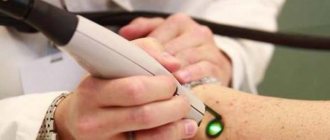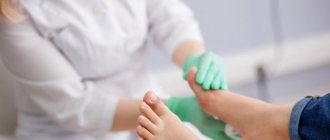Candidiasis is a lesion of the mucous membranes and skin caused by yeast-like fungi such as Candida, which occurs in men and women.
The reason for the development of candidiasis can be either the introduction of this fungus from the outside or the activation of one’s own candida, which normally live on the surface of the mucous membranes of the gastrointestinal tract and genitals in small quantities.
Depending on this, the diagnosis of this infection and further treatment of candidiasis are based.
Main causes of candidiasis
- Infection with fungi through sexual contact. — Candida can get on the genitals, rectum, oropharynx, lips of a healthy sexual partner when his mucous membranes come into contact with the secretions of an infected person. This happens during classic vaginal contact, oral and anal sex.
- Long-term antibiotic therapy. — In this case, the balance between bacteria and fungi Candida albicans is disrupted, which results in active proliferation of fungi against the background of a decrease in the number of normal bacteria. It occurs most noticeably in the intestines and vagina of women.
- Treatment with immunosuppressants and cytostatics. — The immune system is suppressed, which ceases to control the proliferation of fungi.
- Diabetes mellitus - an increase in blood glucose levels leads to high levels of glucose in the urine and mucous membranes, which is a favorable environment for the spread of candida.
- Intestinal dysbiosis associated with a decrease in the number of bifidobacteria and lactobacilli, which normally inhibit the activity of fungi.
- Frequent vaginal douching, especially with the use of antiseptics, also destroys normal microflora and creates a favorable situation for the growth of fungal flora.
- Increased sweating in the area of the folds of the skin of the groin, perianal, axillary, under the mammary glands.
- Some types of candida are capable of multiplying on the surface of vegetables and fruits and infecting the skin and nails of people working with them.
The question arises - what is candidiasis? A sexually transmitted infection, or some kind of disorder within the body?
Candidiasis symptoms and treatment are so diverse and depend not only on the clinical manifestations, but also on the reasons that caused this process.
That is why self-medication of candidiasis without the supervision of a specialist in almost 100% of cases ends in temporary imaginary relief and the development of a chronic disease with periodic relapses.
Only a doctor who has extensive experience and has been dealing with this pathology for many years can carry out a correct diagnosis and select treatment for candidiasis, including therapy with antifungal drugs and local procedures. Simply taking fluconazole capsule or other tablets, as is widely used by everyone, leads to the effects described above.
Risk factors for development
The likelihood of infection increases with casual sexual intercourse, uncontrolled use of antibiotics and drugs that disrupt the natural microflora. Foods with large amounts of sugar and carbohydrates create a favorable environment for fungal growth. Excessive sweating also leads to an exacerbation of candidiasis, so it is necessary to wear cotton underwear that allows the skin to breathe and moisture to evaporate.
At the same time, excessive cleanliness can also cause harm. We are talking about douching. It should not be used as a method of contraception, since it is not effective, and also as a means of hygiene, because it leads to the leaching of the protective flora. If you experience discomfort, you should first consult a doctor.
Types of candidiasis
Based on various characteristics, candidiasis is divided into several groups.
Firstly, these are acute and chronic candidiasis. Acute occurs suddenly under the influence of certain factors (see causes of candidiasis), proceeds violently with vivid symptoms, but after proper treatment it goes away without a trace.
Chronic candidiasis most often develops after inadequate treatment of an acute process and is a concern either constantly or during periodic exacerbations. It is possible to cure it completely, but this is a more difficult task that cannot always be solved.
This is another very important reason to treat any infection immediately as effectively as possible.
Secondly, this fungal disease can be divided into cutaneous candidiasis and mucosal candidiasis.
The skin is usually affected in the area of large axillary, inguinal, intergluteal folds, under the mammary glands, interdigital spaces, periungual ridges, corners of the mouth and red border of the lips, around the nose.
Sometimes candidal changes in the nail plates occur at the same time.
Candidiasis of the mucous membranes covers the genitals (candidal balanoposthitis, urethritis, prostatitis, vulvovaginitis), oral cavity (stomatitis, glossitis), upper and lower respiratory tract (pharyngitis, laryngitis, tracheitis, bronchitis, rhinitis), gastrointestinal tract, eyes. In severe cases, generalized candidiasis develops, covering all internal organs.
Prevention of candidal dermatitis
Tips to help prevent candida dermatitis include the following:
- Wear clothing made from athletic material that wicks moisture away from the body and helps keep skin dry.
- Keep your armpits, groin folds and other parts of the body that are prone to candida infections dry.
- Always shower and dry thoroughly after exercise or if you become sweaty.
- If you are overweight or obese, always keep your skin folds dry, wipe them often, use powder,
- In warm weather, it is preferable to wear open shoes rather than sneakers.
- Change your socks and underwear regularly
- If you have diabetes, it is important to control your blood sugar levels very closely. Hyperglycemia, in addition to other complications, leads to cutaneous candidiasis,
- Losing weight and maintaining optimal body weight is an important measure in the prevention of candidiasis. A person with normal nutrition has a reduced number of skin folds and areas of friction between skin areas. These people are also less likely to develop diabetes, an important underlying condition for thrush.
Symptoms of candidiasis
| № | Localization | Symptoms |
| 1. | glans penis | Red spots, dots, erosions, ulcers covered with a white coating, sometimes mixed with mucus and pus. Swelling of the scalp and foreskin. In the chronic form, cracks and narrowing of the foreskin. Itching, burning, pain occurs with ulcers |
| 2. | Urethra | Redness of the urethral sponges. Mucous, white discharge. Itching in the canal, burning when urinating |
| 3. | Scrotum | Redness of the skin, slight swelling, peeling, sometimes cracks and erosions occur. The itching bothers me. |
| 4. | Vagina | Redness of the skin and mucous membrane of the vaginal vestibule. the appearance of cracks, erosions, ulcers. White, curd-like discharge from the vagina. Severe itching, burning. Pain, discomfort during sexual intercourse |
| 5. | Rectum | Redness of the mucous membrane of the anal canal and the skin of the perianal area, cracks, erosion of the anus. White, mucous discharge from the rectum. Stool upset, itching in the intestines, discomfort during bowel movements. |
| 6. | Oral mucosa | Swelling, redness of the mucous membrane of the cheeks, tongue, palate, pharynx. The appearance of erosions. Cracks in the corners of the mouth. White coating on the surface of the mucous membrane. Pain that worsens when eating or swallowing. |
| 7. | Trachea and bronchi | Cough, white sputum |
| 8. | Nasal passages, nasopharynx | Redness of the skin around the nose, nasal mucosa, difficulty in nasal breathing. The mucous discharge is white. Itchy nose. |
| 9. | Eyes | Redness of the conjunctiva and eyelids. Accumulation of white plaque in the corners of the eyes. Itching, burning. |
| 10. | Skin folds, around nails, between fingers | Red spots, papules with peeling, white coating. Often cracks, erosion. I am concerned about pain in the area of cracks and ulcers. Itching. |
| 11. | Nails | The color of the plates changes. Nails become dull and thicken. The surrounding skin turns red and small blisters may appear. |
There are also several types of candida based on microbiological characteristics:
- Candida albicans is most widespread in Russia.
- Candida krusei
- Candida glabrata
- Candida tropicalis
- Candida parapsilosis
The genus of Candida must always be taken into account when prescribing treatment.
To determine the type of fungus, the severity of the inflammatory process, and the sensitivity of the pathogen to drugs, laboratory diagnostics are performed before prescribing treatment for candidiasis:
- PCR analysis for candida is the determination of fungal DNA in cell scrapings or biological fluids. Material for analysis is taken depending on the expected area of the lesion: In men - scraping from the head of the penis, from the urethra, prostate secretion, sperm.
- In women, scraping of cells from the vestibule of the vagina, from the vagina itself, from the cervical canal.
- Urine.
- If the rectum is affected, scraping from the anal canal and feces.
- If the process is in the oral cavity, upper respiratory tract - scraping from the mucous membrane of the cheeks, tongue, and pharynx. Saliva and sputum are collected.
- The analysis can also be performed by taking material from the nasal mucosa, conjunctiva of the eye, and from erosive surfaces on the affected areas of the skin.
- During the process on the nails, a part of the nail plate is taken.
This test for candidiasis has high sensitivity - up to 99%, speed of execution - 1 day, the ability to determine the amount of the pathogen, and low cost - 300 rubles. The material for the study is taken by a dermatovenerologist or gynecologist during the examination.
Advantages of taking tests at JSC "SZDCM"
- Own laboratory with the latest diagnostic equipment.
- Convenient location of terminals within transport accessibility from anywhere in the city.
- Qualified laboratory technicians and friendly staff.
- Fast analysis and several options for obtaining results. Choose the one that is most convenient for you.
Medical centers and laboratory terminals of the North-Western Center for Evidence-Based Medicine are located in St. Petersburg, Leningrad region, Veliky Novgorod, Okulovka, Kaliningrad and Pskov.
Analyzes
- Bacteriological study for opportunistic pathogenic flora (OPF)
- NC yeasts of the genus Candida: C.albicans, C.krusei, C.glabrata
- Study of the biocenosis of the urogenital tract in women (“Femoflor 13 - screening”)
- Candida albicans
- Mycoses: identification of clinically significant fungi with determination of sensitivity to antimycotic drugs (only for fungi of the genus Candida and Cryptococcus neoformans)
- Specific immunoglobulin E - Candida albicans
go to analyzes
Treatment of candidiasis
After the diagnosis is established, the choice of treatment method for candidiasis begins. Why choice? Because there is no one treatment regimen that would suit all cases of this infection. There is a huge arsenal of antifungal drugs for both external use in the form of creams, ointments, solutions, suppositories, and systemic use - tablets, capsules, solutions for intravenous administration.
In addition, in addition to antimycotics, immunomodulators, anti-inflammatory, antiallergic, regenerating drugs are used, the purpose of which depends on the clinical manifestations, the state of the immune system, the stage and form of the disease.
When treating chronic candidiasis, various combinations of these drugs are possible throughout the course.
| Drugs | Acute candidiasis of the skin and mucous membranes - treatment period is 5–10 days | Chronic candidiasis of the skin and mucous membranes - duration of treatment is 20–30 days or more |
| Antifungal systemic |
|
|
| Antifungal external agents |
| The same drugs, but in longer courses, combining different forms of drugs. If necessary, combination with antibacterial components. |
| Immunomodulators | Not necessary |
|
| Probiotics and eubiotics | Bifidumbacterin, lactobacterin, normoflorin, biiform | Bifidumbacterin, lactobacterin, normoflorin, biiform in long courses both internally and for treating mucous membranes. |
| Antiallergic desensitizing treatment |
|
|
| Anesthetics | For damage to the mucous membranes of the oral cavity and pharynx - sprays with anesthetics |
Intravenous forms of antifungal drugs have a significant advantage. By quickly creating a high concentration of the active substance at the site of inflammation, bypassing the liver, they, if well tolerated, shorten recovery time, reduce the risk of developing a chronic disease and have minimal impact on the liver.
In addition to drug treatment, local procedures are used, the purpose of which is to reduce the severity of symptoms, mechanically remove plaque and mucus containing the pathogen, create maximum concentrations of drugs specifically at the site of the lesion, and improve the regeneration of body tissues.
Each type of this therapy depends on the localization of the pathological process and, accordingly, on the gender of the patient.
Routes of infection
The amount of candida fungus can also increase upon contact with a previously infected person. For example, the causes of candidiasis in this case are as follows:
- during sexual contact (usually in this case the urogenital, vaginal or oral form develops);
- during pregnancy (in this case, the infection is transmitted from mother to child, and he/she develops symptoms of candidiasis at birth);
- during dental procedures (for example, prosthetics - in this case, an adult develops candidiasis in the mouth);
- injuries to the eyes, ears, skin (infection gets into the wounds).
Treatment of candidiasis in men
Our clinic uses the following types of local treatment:
- Baths with antiseptics and antifungal drugs on the head of the penis.
- Wet-dry dressings for erosive and ulcerative lesions of the head and foreskin.
- Instillations into the urethra for candidal urethritis - 800 rubles.
- Total instillations for fungal infections of the posterior urethra and prostate. — 1000 rub.
- Ultraviolet irradiation of the skin of the scrotum and groin areas. — 800 rub.
- Electrophoresis of antifungal drugs into the lesion. -1200 rub.
- Laser irradiation of foci of chronic candidiasis. — 800 rub.
Causes of candidal dermatitis
Candida inflammation of the skin occurs when conditions are created for the active growth of these fungi:
- Warm and humid weather,
- Tight clothes,
- Insufficient personal hygiene,
- Rare change of underwear,
- Skin injuries
- Obesity, in which a large number of skin folds are formed, where the environment is favorable for candidal infection,
- Antibiotics that destroy beneficial bacteria on the surface of the skin, inhibit the division of fungi,
- Treatment with glucocorticoids or other drugs that affect the immune system,
- Diabetes mellitus, in which, in addition to reduced immunity, the fact that skin secretions contain a large amount of glucose also plays a role. This is a breeding ground for fungi. In case of candidal dermatitis, the doctor will definitely prescribe a blood test for glucose, so often this condition accompanies diabetes,
- Pregnancy, which changes the balance in the immune system and may impair glucose tolerance
- Diseases that reduce the immune response
- Moist skin, especially in skin folds. For example, when a person does not dry himself well enough after a shower and puts on shoes on wet feet.
Candida fungi grow and thrive in moist, warm environments. This is why this condition usually affects the skin fold area. Candidiasis is not a contagious disease. However, to people with a weakened immune system, it can be transmitted by touching the affected area of another person's skin.
Treatment of candidiasis in women
Basically, to the general treatment described above, vaginal treatments are added on the gynecological chair with antiseptic, antifungal solutions, during which fungal layers are completely removed from the surface of the vaginal mucosa and a high concentration of drugs is created, which has a detrimental effect on the remaining Candida cultures.
After the first treatment, 95% of women feel significant relief and a decrease in the severity of symptoms.
The cost of the procedure is 800 rubles.
In case of a chronic process, a course of such treatments is recommended, which, in combination with probiotics, not only removes fungi, but also restores the normal microflora of the vagina and the state of local immunity.
Physiotherapeutic treatment is also carried out with a vaginal laser, electrophoresis, and baths with an ozonized sodium chloride solution, which helps to either completely get rid of relapses of chronic vulvovaginal candidiasis or reduce its exacerbations.
In case of a chronic process, two-stage treatment is always recommended for all patients, and especially women.
The first stage is the destruction of the fungus.
The second stage is the restoration of normal microflora of the intestines and vagina.
Candidal dermatitis in a child
Candidal dermatitis occurs in childhood, is especially common in infants, has a characteristic localization (see photo), and when it appears, immediate treatment is required. At an early age, candidal dermatitis affects the inguinal folds and the area between the buttocks, especially when using reusable diapers and when the child rarely changes them, constant humidity and heat in this area are the causes of fungal growth and inflammation (as shown in the photo), and treatment is carried out first It’s all about following the rules of hygiene.
In addition to the complication of diaper dermatitis, this fungus often affects the tongue, cheeks, and can spread to the esophagus. A cheesy white coating forms against the background of reddened mucous membrane, which is easily removed with a spatula. Erosions and ulcers may form. This inflammation can be very painful. This leads to a disruption in general well-being, the baby has difficulty swallowing, he worries, cries, loses appetite and sleeps poorly.
Also, children sometimes experience sinusitis caused by candidiasis. Lesions of the external auditory canal with the release of a cheesy discharge from the ear are also common.
In rare cases, congenital candidiasis occurs - this condition is accompanied by a rash throughout the body, enlarged liver, sepsis, and respiratory distress.
Symptoms in infants include:
- Severe and persistent diaper dermatitis,
- Skin rash that resembles eczema
- White or yellow spots on the tongue or the inside of the mouth and cheeks,
- Colic and abdominal pain for longer than one month,
- Recurrent ear infections
- Symptoms are worse in wet weather.
In older children, signs of chronic candidal infection include:
- Constant craving for sweets
- School skills disorders
- Frequent irritability and bad mood,
- Frequent ear diseases
- High indoor humidity or humid weather worsens the condition.
Treatment of candidiasis of the anus and rectum
Local therapy is supplemented by instillation of silver and antifungal agents into the anal canal. Also, ointments and creams containing antimycotics are applied to the skin of the perianal area and inside the rectum.
The same systemic drugs are used.
In case of systemic candidiasis of internal organs, treatment is carried out exclusively in hospital conditions by administering rather toxic, but most effective antifungal drugs.
Nail candidiasis requires long-term therapy with antifungals for up to 3-4 months, in combination with removal of the affected areas of the nail plates, local exposure to antifungal varnishes, solutions, laser and ultraviolet radiation. Often there is simultaneous damage to the skin of the periungual ridges and interdigital spaces, which also require treatment with creams and other local procedures under the supervision of a dermatovenerologist.
Candida in the blood, treatment
Sometimes patients come in who, as they believe, have a fungus in their blood.
If, indeed, as a result of culture or PCR analysis, which is extremely rare, Candida albicans or another type of it was found, then such a person needs urgent treatment in a hospital setting.
But more often than not, the analysis only shows the presence of antibodies to candida, which is not an emergency indication for treatment, especially if there are no clinical manifestations.
Such patients need to be examined in more detail using PCR and culture.
What happens if candidiasis is not treated or treated incorrectly?
In addition to the transition to a chronic form, a number of serious situations are possible that can lead to a significant loss of health of the body as a whole and individual organs and systems.
Interpretation of results
If there are clear signs of candidiasis (thrush), and during a laboratory test blastospores and pseudomycelia of the fungus were identified, the study ends here. A diagnosis is made and treatment begins.
If a microscopic examination gives a negative result, this does not indicate the absence of infection. The disease can occur in a latent chronic form. It is necessary to carry out a number of other tests, for example, microscopic examination of scrapings, determination of Candida DNA in scrapings, urine, and prostate secretions. Also prescribed:
- Clinical blood test.
- Test for HIV infection.
- Determination of trace element reserves in the body.
- Test for glucose and carbohydrate metabolism metabolites.
These laboratory tests can help identify conditions that may be causing the fungus to grow.
Complications of candidiasis
- Ulceration of the mucous membranes and skin with the formation of fistulas and rough scars.
- Tissue ruptures in the folds of the skin, corners of the mouth, in the vestibule of the vagina, foreskin.
- Narrowing of the opening of the foreskin with the formation of phimosis - the inability to open the head, or paraphimosis - pinching of the head.
- Development of chronic urethritis, prostatitis.
- Damage to the uterus, fallopian tubes and ovaries with the formation of infertility.
- The appearance of allergic reactions on the skin.
- Loss of vision.
- Severe damage to the lungs, intestines and other internal organs.
Despite the fact that candida is a component of normal microflora on human mucous membranes, in certain situations it can manifest itself as a pathogenic microorganism, causing serious diseases and complications.
Treatment of candidiasis should only be carried out by a qualified dermatovenerologist, mycologist or gynecologist using all methods of systemic and local therapy.
Material and methods
The work was carried out as part of a multicenter study “Study of real practice in the treatment of patients with dermatomycosis in the Russian Federation”, conducted in 2012–2013. under the patronage of the pharmaceutical plant EGIS (Hungary) simultaneously in 50 regions of the Russian Federation. 97 medical and preventive institutions of various profiles, 174 doctors are involved. To unify the research, an original version of the questionnaire was developed. Instructions have been prepared for filling out the questionnaire in the form of a multimedia presentation containing a detailed analysis of the differential diagnostic criteria for epidermophytosis, rubromycosis and candidiasis of large folds with photographs of patients. The questionnaire also asked people to express their own opinion about the peculiarities of the course of mycosis in the patient. In total, doctors filled out 5025 questionnaires for patients with MVP. There were 2784 patients with dermatophytosis, including 735 (26.4%) with dermatophytosis of large folds. Patients with ECS predominated ( n
=615; 83.7%). One of the conditions of the experiment was the selection of patients with minimal damage to the nail plates, when the KIOTOS index (clinical index for assessing the severity of Sergeev’s onychomycosis) allowed only local therapy for mycosis of the feet.
The work was carried out in stages.
Stage I. Processing questionnaires of pacemaker patients filled out by doctors using Excel. Of the 615 questionnaires, 235 (38.2%) contained complete data. The sample was representative to obtain reliable data.
Stage II. Studying the features of the course of ECS in Russia.
Stage III. Multivariate analysis of the effectiveness of ECS treatment with sertaconazole ( Zalain
).
Statistical processing of the research results was carried out in the laboratory of mathematical theory of experiment, Faculty of Biology, Moscow State University. M.V. Lomonosov using the statistical software package Stastica 6.0. The method of correlation analysis (Spearman coefficient) was used. Those values of correlation coefficients for which p
was less than the significance level (α=0.05), i.e. these coefficients were statistically significantly different from zero.










